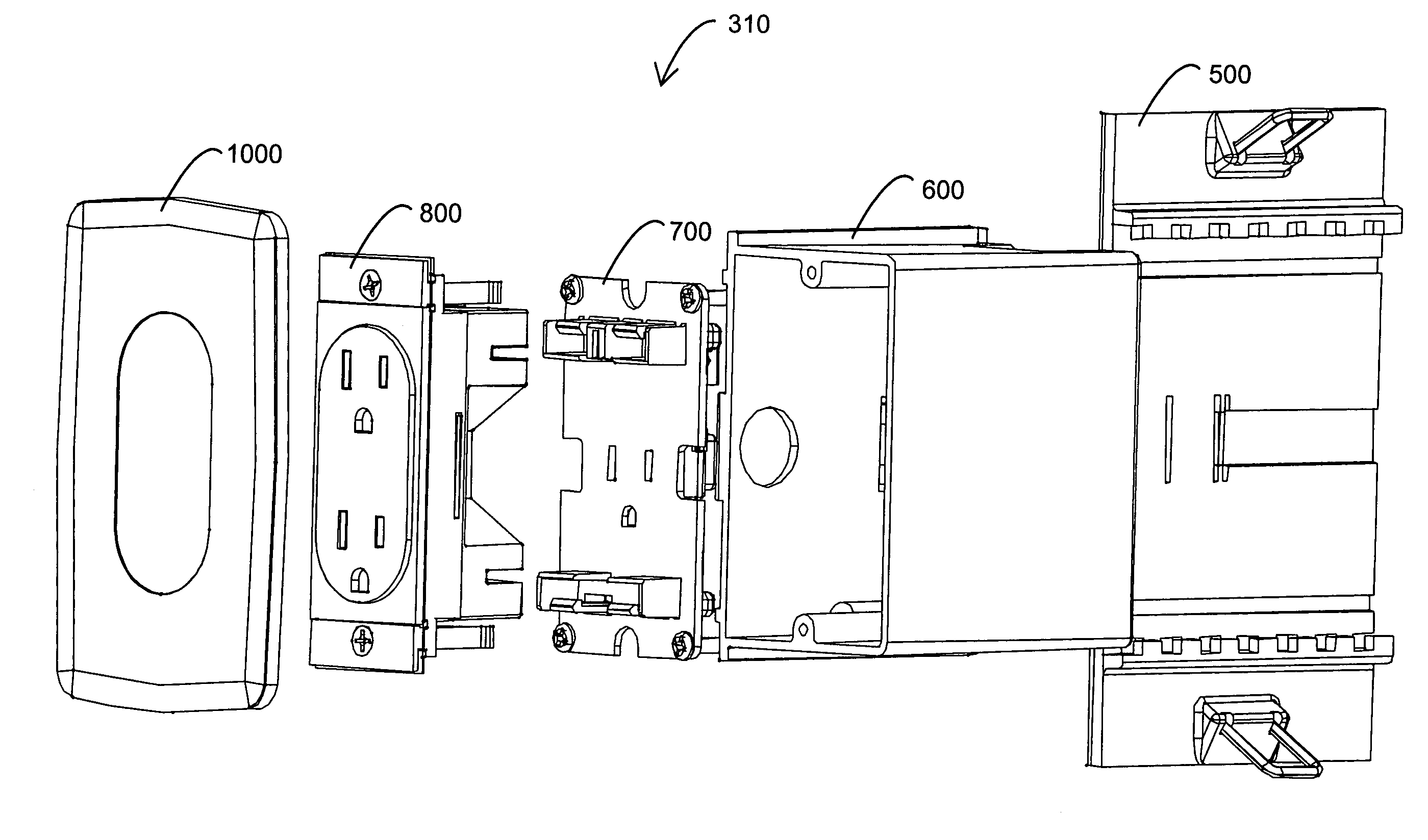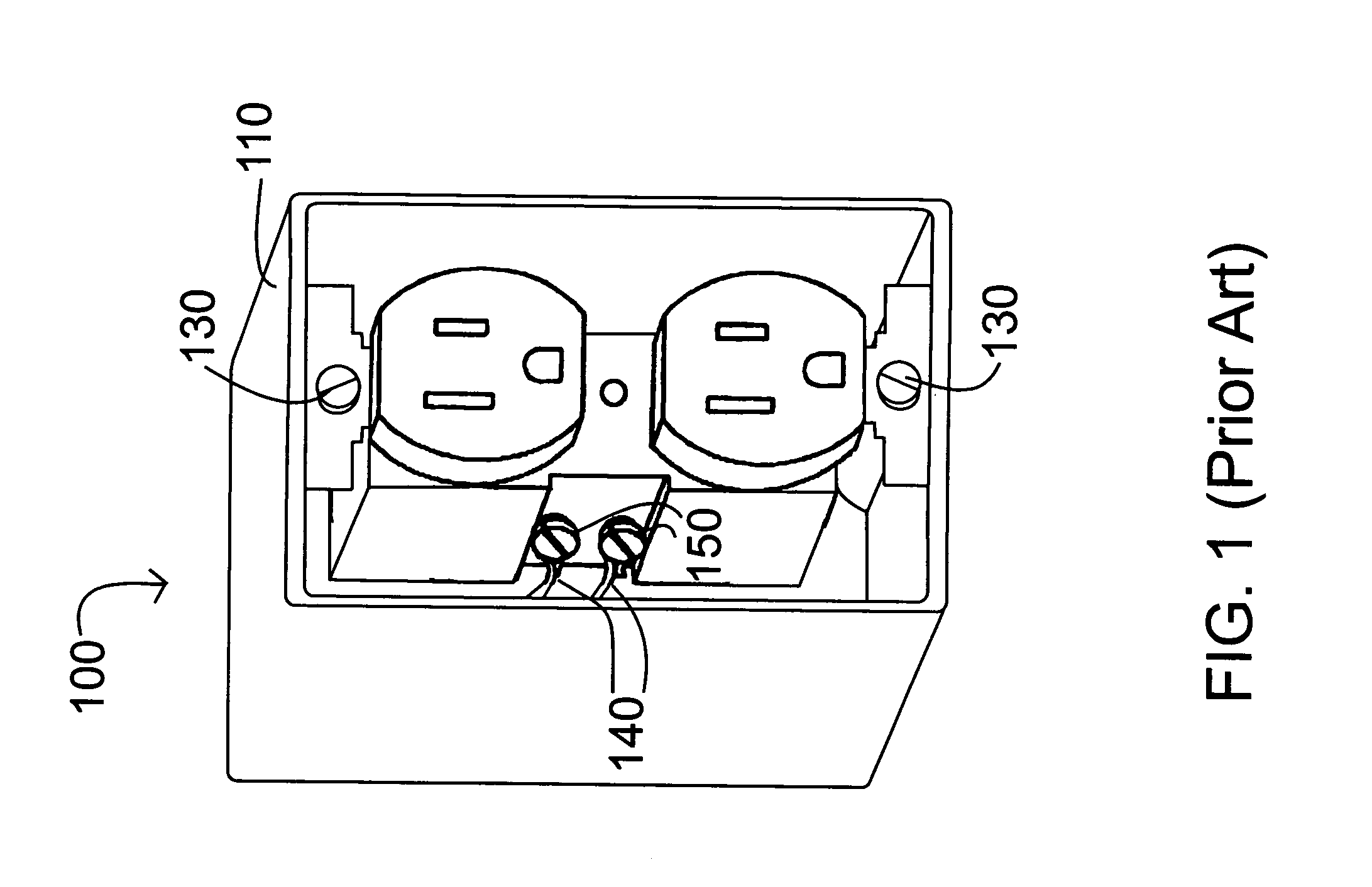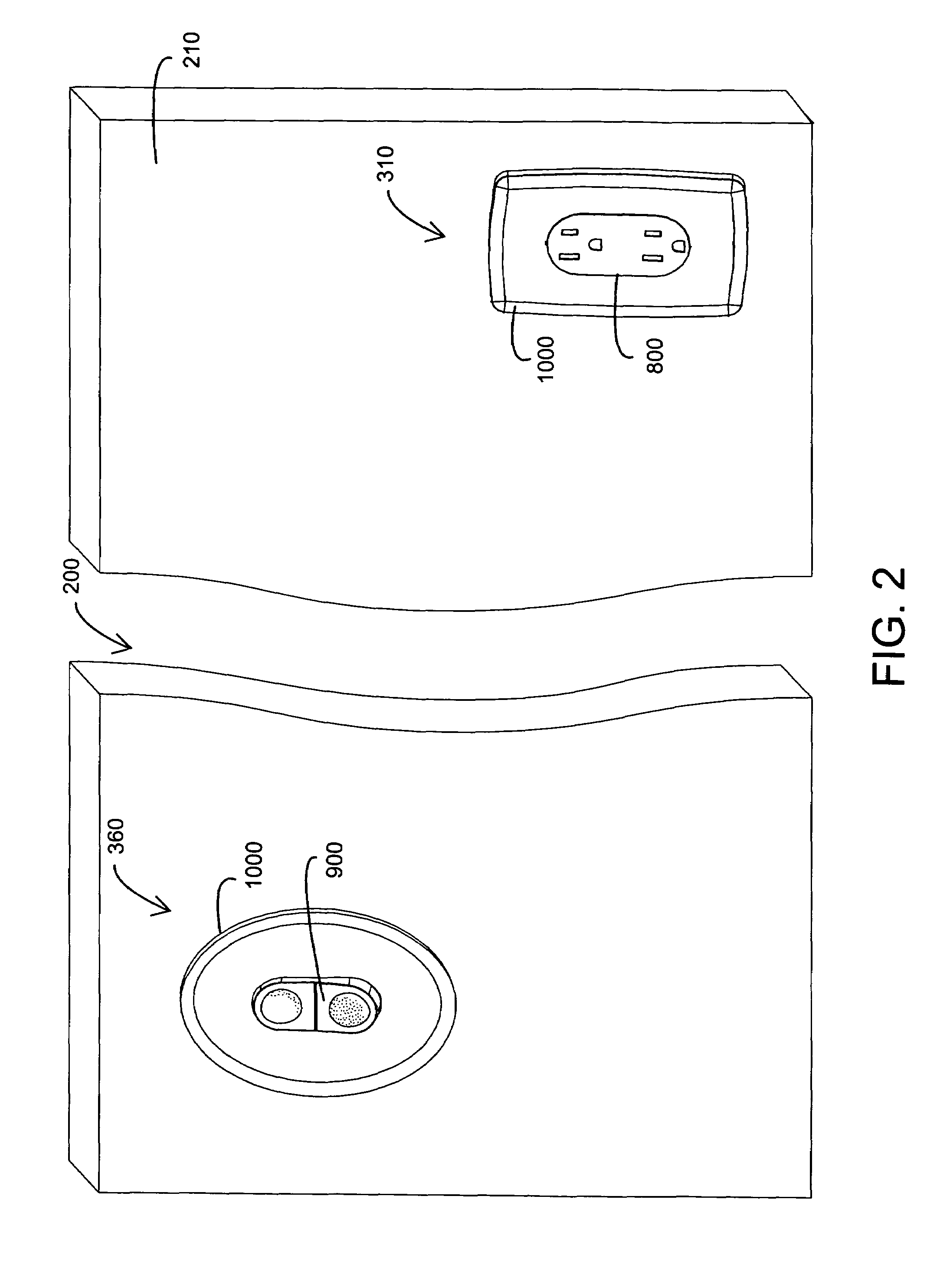Electrical wiring method
a technology of electrical wiring and wires, applied in the direction of contact member manufacturing, connection contact member material, coupling device connection, etc., can solve the problems of electrical wiring construction, unnecessary installation costs, and installation of wall panels, so as to eliminate the shock exposure of other workers, replace the socket and switch easily and safely, and eliminate the effect of cutting and patching repairs
- Summary
- Abstract
- Description
- Claims
- Application Information
AI Technical Summary
Benefits of technology
Problems solved by technology
Method used
Image
Examples
Embodiment Construction
System Overview
[0053]FIG. 2 illustrates one embodiment of an installed safety electrical outlet and switch system 200. As shown in FIG. 2, the outlet and switch system 200 comprises a outlet assembly 310 and a switch assembly 360. Each of these assemblies 310, 360 provide a user-accessible electrical function. The outlet assembly 310 is mounted in a wall 210 and functions to supply a user with electrical power through a conventional AC plug inserted into an outlet module 800. The switch assembly 360 is also mounted in the wall 210 and functions to allow a user to control electrical power to an outlet, a light or any of various electrical devices (not shown) by actuating a switch module 900. The installed outlet assembly 310 includes a face plate 1000 and an outlet module 800 mounted so that its visible portion is generally flush with the face plate 1000. The installed switch assembly 360 includes a face plate 1000 and a switch module 900 mounted so that its visible portion is in a p...
PUM
| Property | Measurement | Unit |
|---|---|---|
| distances | aaaaa | aaaaa |
| distances | aaaaa | aaaaa |
| specific distances | aaaaa | aaaaa |
Abstract
Description
Claims
Application Information
 Login to View More
Login to View More - R&D
- Intellectual Property
- Life Sciences
- Materials
- Tech Scout
- Unparalleled Data Quality
- Higher Quality Content
- 60% Fewer Hallucinations
Browse by: Latest US Patents, China's latest patents, Technical Efficacy Thesaurus, Application Domain, Technology Topic, Popular Technical Reports.
© 2025 PatSnap. All rights reserved.Legal|Privacy policy|Modern Slavery Act Transparency Statement|Sitemap|About US| Contact US: help@patsnap.com



